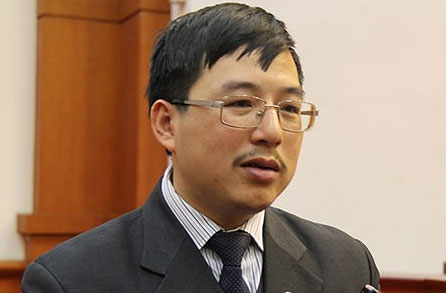Identifying obstacles to equitisation
 The government’s equitisation target of divesting 290 state-owned enterprises (SOEs) during this year’s fourth quarter alone seems hardly achievable. What are your views on the viability of this plan?
The government’s equitisation target of divesting 290 state-owned enterprises (SOEs) during this year’s fourth quarter alone seems hardly achievable. What are your views on the viability of this plan?
As of the beginning of 2011, Vietnam was home to 1,309 wholly state-owned businesses, according to statistics. Prime Minister Nguyen Tan Dung, in a donors’ meeting at that time, vowed to cut down the number of SOEs by half by the end of 2015. The premier had urged ministries, sectors, and localities to scale up efforts to realise that goal.
At the moment, Vietnam houses about 500 SOEs only, meaning that the SOE transformation process in the 2011-2015 period has fared beyond expectations driving down the number of wholly state-owned units by about 60 per cent.
What is your opinion on the target of completing the equitisation of 432 SOEs during 2014-2015?
As the SOE equitisation plan has been progressing according to schedule, the prime minister has shown determination to speed up the process and set forth the target of equitising 432 SOEs during 2014-2015 and reducing the number to 200-300 by 2020.
In materializing the goal, 143 SOEs has been equitised in 2014, nearly double compared to 2013. 94 SOEs were equitised in this year’s first nine months. In total, this makes 234 SOEs, equal to 55 per cent of the targeted figure.
If the remaining 195 firms do not step on the equitisation path during the rest of the year, we may have to drop the target.
However, if we consider the SOE streamlining plan that was approved by the National Assembly and the premier’s commitment to foreign investors and donors that the number of SOEs will fall be halved by late 2015, we have surpassed expectations.
How would you propose to tackle these remaining 195 SOEs?
The largest obstacle to the process is the huge commodity volume against the lack of investors, a simple oversupply situation.
Furthermore, the securities market has yet to be warmed up to sufficiently attract foreign and strategic investors.
An important reason is that many business directors are scared of equitisation because restructuring would bring their companies’ financial situation, liabilities, production and business operations to light. In case the business runs ineffectively and its finances lack transparency, the executives will be held accountable, pushing them to delay the process.
In this respect, the premier has urged ministries and sectors to ramp up efforts and take measures to push up the pace of equitisation. In fact, the Ministry of Transport and the Ministry of Agriculture and Rural Development are doing a good job on their equitisation schemes.
What measures would be the most effective to speed up the pace of equitisation?
It is good news that more and more foreign investors have come to learn about Vietnamese SOEs which are about to jump on the equitisation bandwagon or about to divest from non-core investments. They, however, remain cautious due to a lack of publicity and transparency of information in the SOE sector.
In this context, the government, the prime minister, and Ministry of Finance have enacted a series of legal documents that require SOEs to properly handle their information disclosure obligations, applicable to public and listed companies. The process will be supervised by competent state bodies.
Businesses, particularly bigger ones, need to pay heed to increase their exposure among foreign investors, as up to now firms only focus on information disclosure in the domestic market, and have yet to expedite road shows and investment promotions abroad.
What the stars mean:
★ Poor ★ ★ Promising ★★★ Good ★★★★ Very good ★★★★★ Exceptional
Latest News
More News
- Mondelez Kinh Do - a chapter of purpose-led leadership in Vietnam (December 18, 2025 | 09:44)
- VNPAY services receive the highest-level PCI DSS international security certificates for six consecutive years (December 17, 2025 | 23:47)
- PPL extends its reach into ASEAN (December 17, 2025 | 15:44)
- Over 600 BUV graduates meeting quality benchmarks across triple quality assurance levels (December 17, 2025 | 13:00)
- HEINEKEN Vietnam partners with Ho Chi Minh City Traffic Police on road safety drive (December 17, 2025 | 09:42)
- BUV and China’s CSCSE sign MoU to boost educational cooperation (December 17, 2025 | 08:00)
- PVT Logistics honoured with ‘Fast Enterprise Award’ at APEA 2025 (December 16, 2025 | 18:22)
- Empowering Sustainable Data Centers with Smart Infrastructure Solutions (December 16, 2025 | 13:59)
- Vietjet wins gold ESG transport sustainability award in Taiwan (China) (December 13, 2025 | 22:03)
- Legal framework completed for national digital transformation (December 13, 2025 | 21:55)

















 Mobile Version
Mobile Version